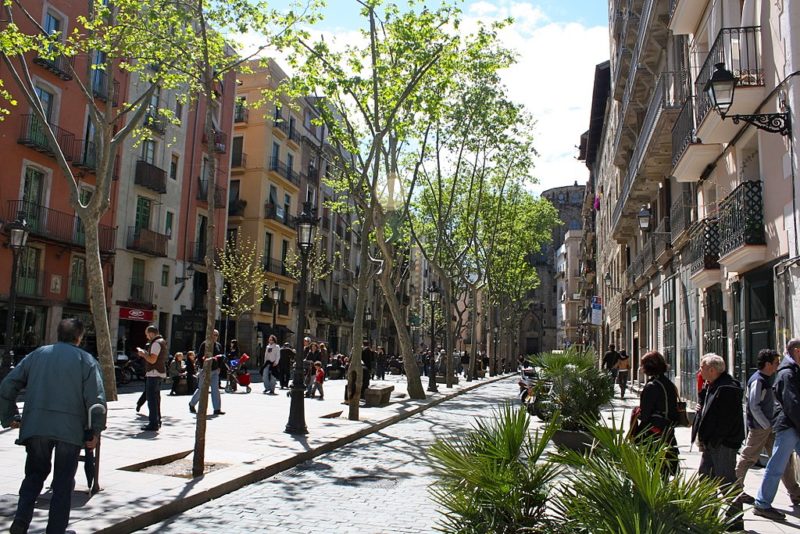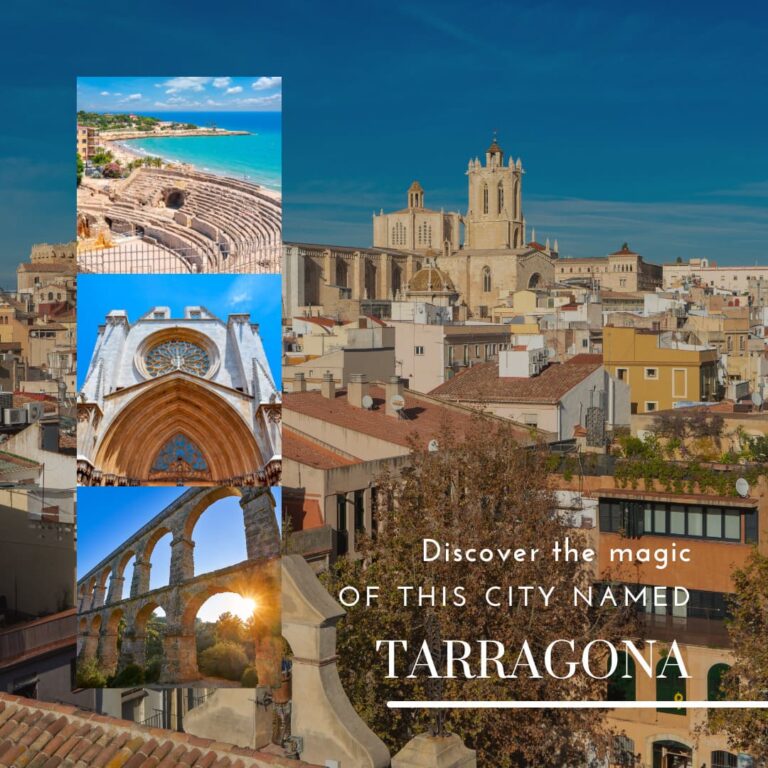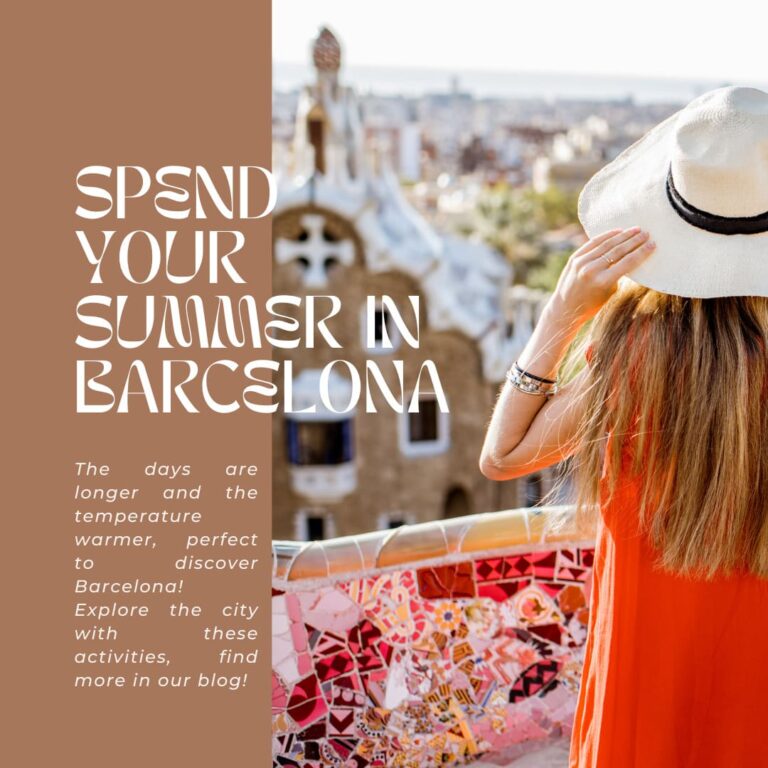The atmospheric quarter of la Ribera is home to Passeig del Born, the Picasso Museum or the majestic church of Santa Maria del Mar.
Constructions of the church started in the 14th century, at the heigh of Catalonian’s expansion as a Mediterranean power, an Santa Maria del Mar became a great example of pure Catalan Gothic. The dimensions and austerity of the interior are breathtaking but wars and fires left the interior stripped to its essence. The result is a lofty hall suffused with soft light from the stained-glass windows. Concerts held in the interior are prove of its excellent acoustic. A perfect symmetry is achieved by the octagonal columns.
The narrow streets surrounding the church are named after the guilds of the craftsmen who once worked there. The rear door of the temple leads to the Passeig del Born, a pretty, rectangular plaza where joust were held in the Middle Ages and which today is the nucleus of this fashionable area. It is full of smart galleries, restaurants, bars and chic shops. The nightlife of the area is well know by locals. It is a nice part of the city to hang out and have a drink at night.
A must is El Born Centre Cultural, an old local market which has been converted into a museum and a cultural centre. It features archeological ruins and hosts temporal and permanent exhibitions.
Carrier Moncada is lined with splendid Gothic palaces, populated by aristocrats from 14th to the 16th centuries. This quarter is probably the most authentically medieval part of the city.

One of the crown’s jewel is the Picasso Museum which occupies five palaces. The buildings were acquired by the city to house the collection of paintings, drawings and ceramics by Picasso. It is the largest collection by the genius outside of Paris.
In front of it, the visitor can find the MEAM (Museu Europa d’Art Modern) which promotes figurative art from the late 19th century to the present day.
The Santa Catarina Market could be a great place for a lunch break.
Among other Museums, galleries or mansions at El Born you should stop to contemplate Palau de la Música, one of the city’s greatest achievements of modernist architecture. Inaugurated in 1908 has been designated UNESCO World Heritage Site. The brick exterior, with Moorish arches and columns inland with floral tiles is sober compares to what is inside. Full of mosaics, tiles, stained glass, enamel, sculptures and carving. The walls made of glass allow the sunlight streaming in during afternoon concerts sets the place on fire.
The best way to experience the Palau is to attend a concert, hosting from classical recitals to jazz music.
Sources | Dave Meler, Barcelona Pocket Guide



